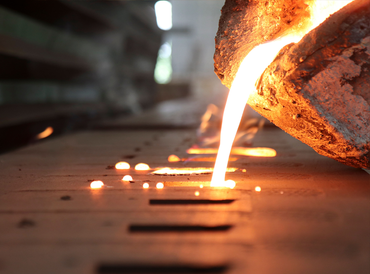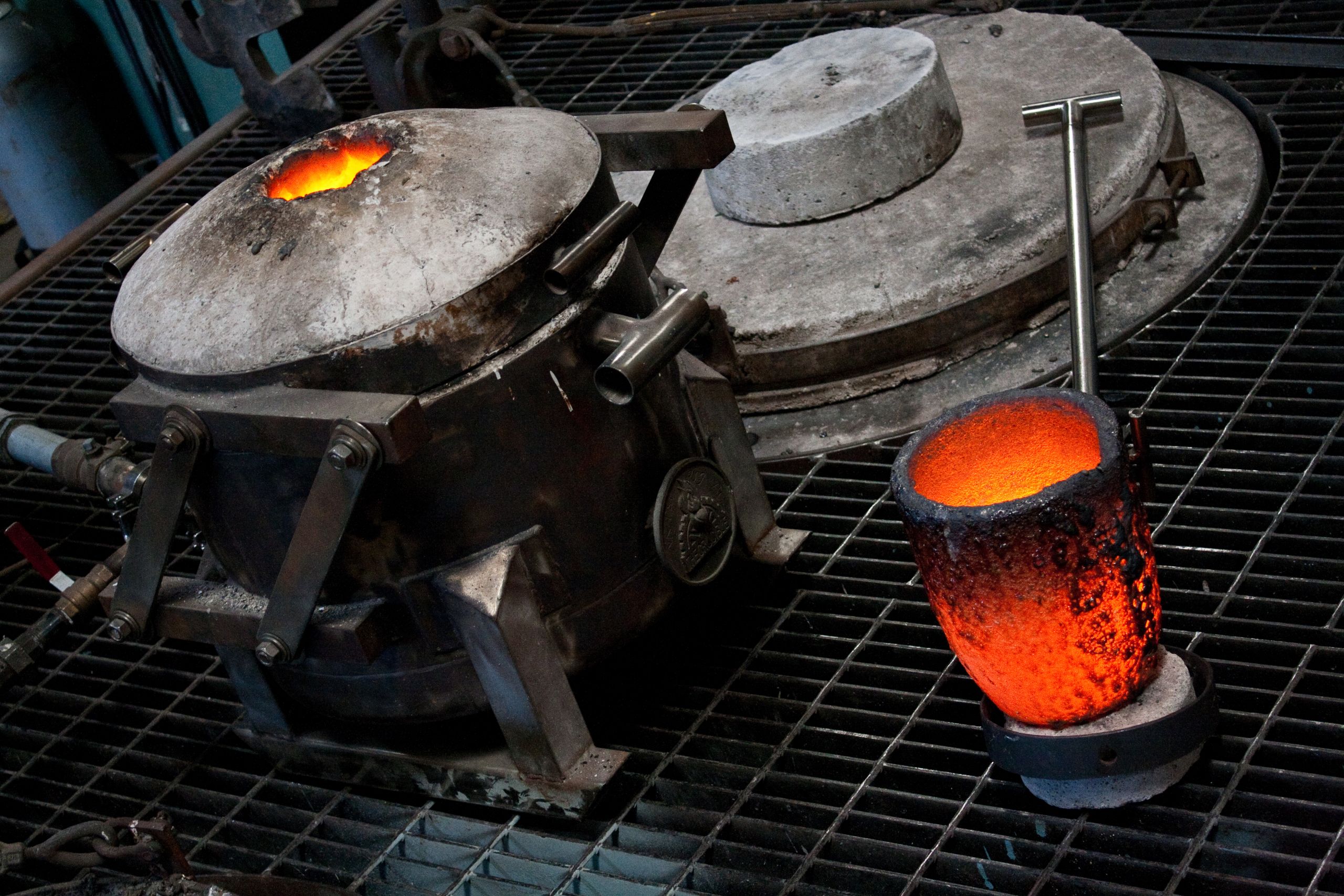Understanding Metal Casting process variations: from basic to advanced processes
Wiki Article
Exploring the Core Services Offered by a Steel Shop: A Thorough Overview
The services offered by a steel factory play a crucial role in different markets. From steel spreading processes to mold and mildew construction, each aspect is designed to guarantee precision and efficiency. Quality control actions even more boost the reliability of the products produced. Recognizing these core services can reveal just how they accommodate particular industrial requirements. What nuances in these offerings add to their efficiency and versatility?Comprehending Metal Casting Procedures
Steel spreading is a centuries-old strategy, comprehending its procedures continues to be crucial for modern-day manufacturing. Steel casting involves putting liquified metal right into a pre-formed mold, enabling it to solidify right into the wanted shape. This procedure includes several vital phases, consisting of melting the steel, preparing the mold, pouring, and air conditioning.Different casting approaches, such as sand casting, pass away casting, and financial investment casting, accommodate diverse manufacturing needs and material residential or commercial properties. Each method supplies unique advantages, such as expense performance or accuracy, making them suitable for varied applications.

Pattern Making Strategies
Pattern making strategies play an essential function in the steel factory process, offering as the foundation for creating precise castings. Conventional approaches have actually been complemented by contemporary digital strategies, which boost accuracy and performance. Comprehending both methods is important for optimizing manufacturing and meeting the demands of numerous applications.Traditional Pattern Making
When producing steel spreadings, conventional pattern making works as a basic strategy that has stood the test of time. This method includes crafting a physical version, or pattern, which reproduces the preferred form of the last spreading. Typically made from steel, wood, or plastic, these patterns are developed to account for variables like contraction and mold release. Artisans skilled in this craft utilize various methods, consisting of split patterns and core prints, to assure accurate molding. The process typically needs thorough interest to information, as the pattern straight influences the high quality and accuracy of the last item. Conventional pattern making not just symbolizes craftsmanship but also assures the reliability and uniformity required in the steel spreading sector.Modern Digital Techniques
The evolution of pattern production has embraced modern electronic methods, substantially boosting accuracy and performance in the metal casting procedure. Computer-aided layout (CAD) software allows engineers to produce complex patterns with exact specs, decreasing human error and material waste. Additive production, or 3D printing, enables fast prototyping of patterns, facilitating quick changes and iterations. These digital approaches sustain complex geometries that conventional techniques may have a hard time to replicate. Incorporated digital process simplify communication between style and manufacturing teams, guaranteeing a natural process from idea to spreading. Inevitably, the fostering of contemporary digital methods in pattern making not only maximizes manufacturing timelines yet also raises the high quality of the final metal components, placing factories at the leading edge of development in the market.Mold Style and Construction
Mold style and manufacture are vital elements in the metal shop process, influencing both the high quality and accuracy of castings. Numerous types of molds, consisting of sand, financial investment, and ceramic, offer various applications and materials. The layout process entails several essential actions that assure molds are customized to fulfill certain production requirements.Kinds of Molds
In the domain name of metal foundries, different sorts of mold and mildews play an important role in shaping the last products. One of the most common kinds include sand mold and mildews, which are flexible and economical, ideal for complex shapes. Covering molds, understood for their smooth surface areas, provide high precision and are frequently used for smaller manufacturing runs. Financial investment mold and mildews, or lost-wax molds, are made use of for intricate layouts, permitting for high information and superb surface coating. Irreversible mold and mildews, made from metal, are ideal and long lasting for high-volume production, developing consistent results. Ceramic mold and mildews are used for specialized applications, especially in casting high-temperature alloys. Each mold and mildew type is picked based upon the particular requirements of the casting procedure and the desired homes of the end product.Style Process Steps
Choosing the suitable sort of mold and mildew is just the start of the process in a steel foundry. The style procedure entails a number of necessary steps, starting with thorough specs based on the desired product. Designers use computer-aided design (CAD) software program to develop specific mold styles, making sure all features and measurements straighten with manufacturing demands. After wrapping up the design, the fabrication of the mold starts, which may entail products such as steel, sand, or ceramic. This stage requires meticulous attention to information to guarantee precision and toughness. Once the mold is fabricated, it undergoes testing to confirm its efficiency before being used in production. Each action in this process is vital for achieving top quality spreadings and conference market standards.Melting and Pouring Methods
Different melting and putting methods are important to the metal foundry procedure, each made to fit various kinds of steels and production demands. Common techniques consist of induction melting, crucible melting, and electrical arc melting, which serve to efficiently reach the essential temperature levels for various alloys. Induction melting uses magnetic fields to warm metal, making it suitable for accurate temperature level control and very little contamination.Pouring approaches vary as well, with options such as ladle putting, lower pouring, and tilt putting. Ladle pouring is the typical approach, enabling guidebook control over the flow of molten metal. Base putting, frequently used for huge spreadings, enhances efficiency by decreasing turbulence throughout the put. Turn pouring provides enhanced availability for complex mold and mildews, assisting in the filling procedure.
Each approach's selection straight impacts the high quality of the end product, highlighting the relevance of picking the suitable technique based on particular task demands.

Warmth Therapy and Finishing Procedures
After the melting and pouring processes are finished, heat therapy and ending up procedures play a critical role in enhancing the homes of actors metal elements. Warm treatment entails regulated home heating and cooling down cycles that modify the microstructure of steels, enhancing characteristics such as hardness, ductility, and stamina. Aluminum Foundry. Numerous approaches, including annealing, tempering, and quenching, are used depending upon the particular needs of the finished productComplying with heat therapy, ending up procedures are critical for attaining the desired surface area characteristics. Methods such as grinding, polishing, and sandblasting are made use of to get rid of flaws and boost the visual high quality of the metal. In addition, surface treatments like coating and plating can enhance rust resistance and wear residential properties. With each other, these processes ensure that actors metal parts meet stringent performance criteria and fulfill their intended applications, inevitably adding to the overall high quality and long life of the last items.
Quality Assurance and Screening Procedures
Assuring the top quality of cast steel parts calls for rigorous quality assurance and testing treatments throughout the production procedure. Steel shops implement several stages of examination to guarantee that items satisfy industry standards and consumer specs. This starts with resources evaluation, where the chemical composition and physical residential or commercial properties of steels are analyzed. Throughout manufacturing, in-process evaluations are done to monitor casting measurements and discover any kind of defects early.
Customized Solutions and Engineering Assistance
While standard spreadings serve lots of applications, the requirement for personalized remedies and design support has become progressively important in the metal shop market. As business help affordable benefits, customized items that satisfy specific demands are commonly essential. Steel factories give experience in design and material selection, making it possible for customers to enhance performance and functionality.Design assistance encompasses a variety of solutions, from first design concepts to prototypes and final production. Teaming up very closely with customers, shops can address distinct difficulties, seeing to it that customized spreadings fulfill precise specifications. Advanced technologies, such as computer-aided layout (CAD) and simulation software, improve the accuracy of custom-made services.
Additionally, shops may use post-casting services, consisting of machining and completing, to further fine-tune the last item (Aluminum Foundry). This all-inclusive support not just speeds up the advancement process but likewise guarantees the distribution of top quality, bespoke components customized to varied Metal Casting market demands
Often Asked Questions
What Sorts Of Metals Can Be Cast in a Foundry?
A shop can cast a range of steels, including iron, aluminum, copper, bronze, steel, and brass. Each metal uses special buildings, making them ideal for different applications in sectors such as automobile, aerospace, and manufacturing.The length of time Does the Steel Casting Process Generally Take?
The steel casting process generally takes anywhere from a few hours to numerous days, depending on aspects like the complexity of the style, kind of steel, and production methods employed by the foundry.
What Are the Ecological Influences of Steel Shops?
Steel factories can contribute to air and water air pollution via exhausts and waste. Source intake, including power and raw materials, additionally exacerbates environmental deterioration, demanding lasting techniques to mitigate their ecological impact and promote accountable operations.Exactly How Do Foundries Make Certain Employee Security During Procedures?
Shops assure worker safety via strenuous training programs, making use of individual safety tools, routine safety and security audits, and adherence to industry regulations. These steps jointly develop a more secure working setting for all employees included in procedures.What Industries Commonly Use Steel Shop Providers?
Industries such as vehicle, aerospace, construction, and manufacturing regularly utilize steel foundry solutions. These industries rely upon shops for producing actors components vital for equipment, vehicles, and structural applications, making certain high quality and sturdiness in their items.Metal casting involves putting liquified steel right into a pre-formed mold, allowing it to solidify right into the desired shape. Mold and mildew design and fabrication are important elements in the steel factory process, affecting both the high quality and precision of castings. Picking the proper type of mold and mildew is just the start of the process in a steel foundry. Different melting and putting methods are crucial to the steel shop procedure, each developed to accommodate various types of steels and production needs. After the melting and pouring processes are completed, warmth therapy and completing processes play a critical role in enhancing the homes of cast metal elements.
Report this wiki page